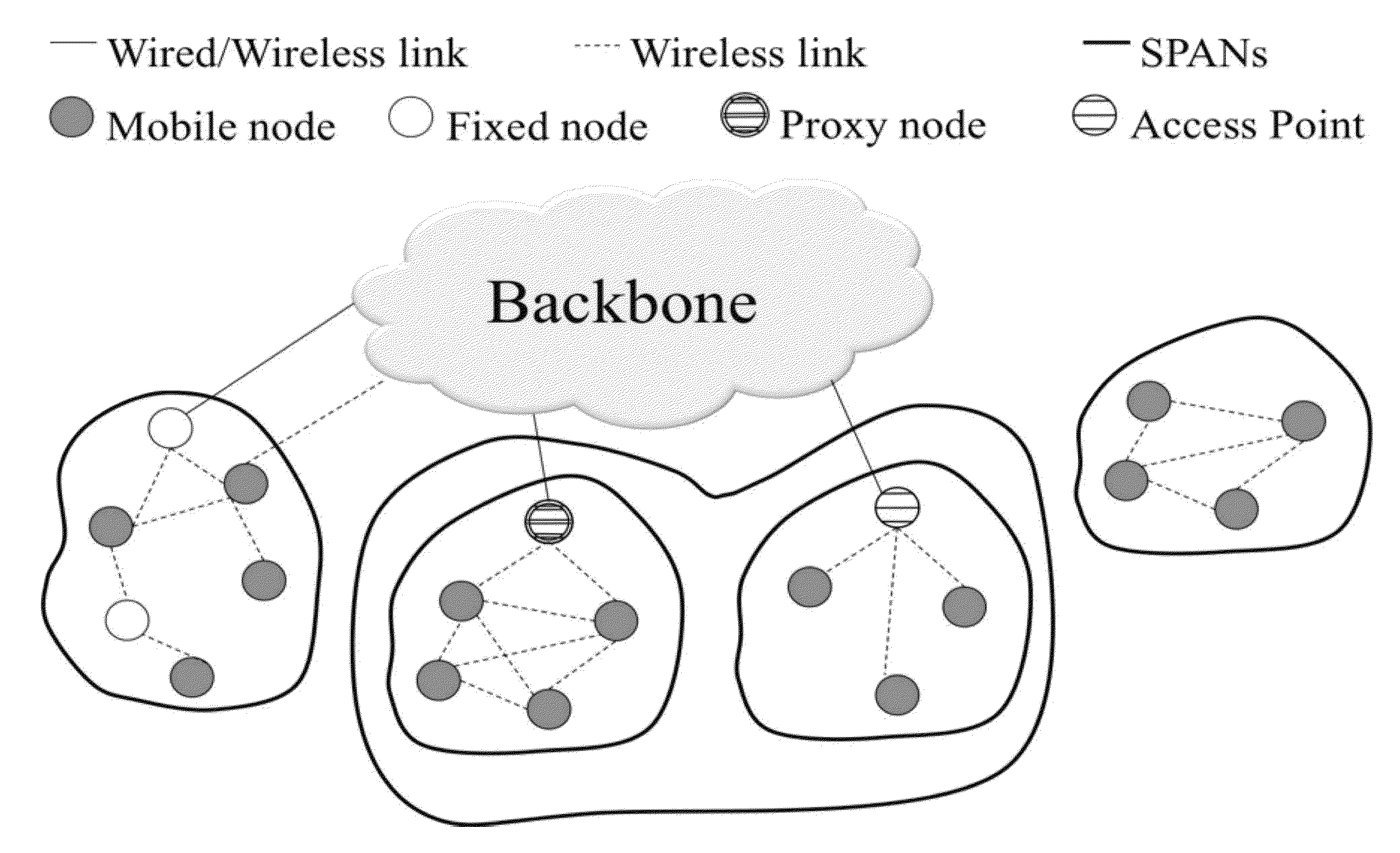Systems and Methods for Creating, Managing and Communicating Users and Applications on Spontaneous Area Networks
a technology of user and application communication and system, applied in the field of mobile device networks, can solve the problems of disconnections and changes in network topology, difficulty in joining these mobile devices to local networks, and difficulty in discovering and communicating with other mobile devices in the same geographic area
- Summary
- Abstract
- Description
- Claims
- Application Information
AI Technical Summary
Problems solved by technology
Method used
Image
Examples
##p example
[0647]4.3.6 DELTOYA+PTP Example
[0648]In FIG. 27 we show a scheme of a possible operation of DELTOYA and PTP during the process of getting a DTDO. A, B, C, D, E and F are the nodes involved in the process. A is the node that wants to get the DTDO, and B, C and E are the only nodes that have the DTDO.
[0649]During the process, the first question that A issues is who has the DTDO. Node A will send a DTDO Request message, for example, in flooding and with the corresponding retransmission algorithm in case the DTDO Request message has no effects. All nodes that have the DTDO (B, C and E in this example) will reply with a DTDO Response message indicating which part of the DTDO they have (it is possible to have only fragments of the DTDO).
[0650]The payload of the DTDO Request message could contain the DTDO_ID and DTDO_version fields in order to identify the DTDO. The payload of the DTDO Response message could contain the DTDO_ID and DTDO_version, together with the [offset,size] of the fragm...
PUM
 Login to View More
Login to View More Abstract
Description
Claims
Application Information
 Login to View More
Login to View More - R&D
- Intellectual Property
- Life Sciences
- Materials
- Tech Scout
- Unparalleled Data Quality
- Higher Quality Content
- 60% Fewer Hallucinations
Browse by: Latest US Patents, China's latest patents, Technical Efficacy Thesaurus, Application Domain, Technology Topic, Popular Technical Reports.
© 2025 PatSnap. All rights reserved.Legal|Privacy policy|Modern Slavery Act Transparency Statement|Sitemap|About US| Contact US: help@patsnap.com



